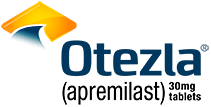First and only oral therapy approved for mild, moderate, and severe plaque psoriasis, and active PsA SEE THE DATA

Plaque Psoriasis
OTEZLA:
4 INDICATIONSOtezla® (apremilast)/Otezla XR™ (apremilast) is indicated for the treatment of adult patients with plaque psoriasis who are candidates for phototherapy or systemic therapy.Read more
*Estimates of patients treated reflect global data since launch (Apr 2014-Mar 2023; US=59% of data). Calculations based on observed drug utilization parameters and number of units distributed. Utilization patterns change over time to best represent current markets.
FDA, U.S. Food and Drug Administration; PsA, psoriatic arthritis; TB, tuberculosis.
References: 1. Otezla [package insert]. Thousand Oaks, CA: Amgen Inc. 2. Data on file, Amgen Inc. 3. Otezla® (apremilast) FDA approval letter. March 21, 2014.
Hypothetical patient
Fred
Presentation:
Treatment History:
Patient Considerations:
Hypothetical patient

FOREMOST: A global trial uniquely focused on early oligoarticular PsA patients like Fred, with a distinct primary endpoint to precisely measure low disease activity 2,3
Study design: Phase 4, multicenter, randomized, double-blind, placebo-controlled, parallel-group study. Patients with oligoarticular PsA (>1 but ≤4 tender and >1 but ≤4 swollen joint count) and early disease (signs and symptoms of PsA ≤5 years’ duration) were randomized 2:1 to receive either Otezla 30 mg BID (n=203) or placebo (n=105) for 24 weeks, stratified based on concomitant medication use, with an early escape at week 16. The Active Treatment Extension phase continued up to 48 weeks. 2
In the FOREMOST trial, MDA-Joints were defined as the proportion of subjects who achieved a clinical state of minimal disease activity. 4
†One active joint could be swollen, tender, or both.
‡Sentinel joints pertain to joints affected at baseline.
§Patients with ≤4 active joints at baseline. Based on all joints. One active joint could be swollen, tender, or both. **Data are presented “as observed” with no imputation for missing values in order to describe outcomes among those patients who continued to receive treatment over 48 weeks. ††Patients discontinued treatment during the placebo-controlled phase due to adverse events, withdrawal by patient, and lack of efficacy. Patients discontinued treatment during the apremilast-extension phase due to lack of efficacy, adverse event, and withdrawal by patient. 4
Post-hoc analysis is exploratory and has not been adjusted for multiple comparisons.
No conclusions of statistical or clinical significance can be drawn.
BID, twice daily; BSA, body surface area; FAS, full analysis set; HAQ-DI, Health Assessment Questionnaire—Disability Index; LEI, Leeds Enthesitis Index;
MDA-Joints,
minimal disease activity-joints; MI, multiple imputation; NSAID, nonsteroidal anti-inflammatory drug; PsA, psoriatic arthritis; SJC, swollen
joint count; TJC, tender joint count; VAS, visual analog scale.
Contraindications
Otezla/OTEZLA XR is contraindicated in patients with a known hypersensitivity to apremilast or to any of the excipients in the formulationWarnings and Precautions
Hypersensitivity: Hypersensitivity reactions, including angioedema and anaphylaxis, have been reported during postmarketing surveillance. If signs or symptoms of serious hypersensitivity reactions occur, discontinue Otezla/OTEZLA XR and institute appropriate therapyContraindications
Warnings and Precautions
Adverse Reactions
Use in Specific Populations
Please click here for the full Prescribing Information.
References: 1. Gossec L, Gladman D, Coates L, et al. Presented at: 32nd Annual Meeting of the European Academy of Dermatology and Venereology (EADV); October 11-14, 2023; Berlin, Germany. 2. Gossec L, Coates LC, Gladman DD, et al. Ann Rheum Dis. 2024;83(11):1480-1488. 3. Coates LC, Helliwell PS. J
Rheumatol. 2016;43(2):371-375. 4. Data on file, Amgen; 2023. 5. Mease P, Gladman D, Coates LC, et al. Presented at: ACR/ARHP Annual Meeting; November
10-15, 2023; San Diego, CA [1]. 6. Mease P, Gladman D, Coates LC, et al. Presented at: ACR/ARHP Annual Meeting; November 10-15, 2023; San Diego, CA [2].
7. Gossec L, Coates L, Gladman D, et al. Presented at: Annual European Congress of Rheumatology (EULAR 2024); June 12-15, 2024; Vienna, Austria.